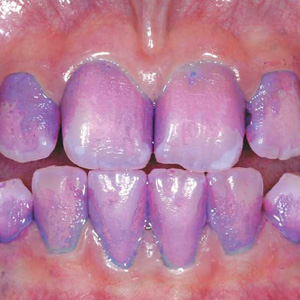So…you faithfully brush and floss your teeth every day. Kudos to you! Along with regular dental visits, daily hygiene is the best thing you can do to keep your teeth and gums disease-free.Dental plaque, that thin film of bacteria and food particles that builds up on teeth, is the number one cause for tooth decay and periodontal (gum) disease. Thoroughly removing it daily through brushing and flossing drastically reduces your chances for disease.But just the acts of brushing and flossing aren’t enough—both are skills requiring some level of mastery for truly effective plaque removal. Otherwise, any leftover plaque could be an invitation for infection.So, how can you tell if you’re getting the job done? One way is a quick swipe of the tongue across your teeth after brushing: If they still feel gritty rather than smooth, chances are you left some plaque behind.A more comprehensive method, though, is with a plaque disclosing agent, a product found in stores that sell dental care items. These kits contain liquids, tablets or swabs that when applied to the teeth right after brushing or flossing temporarily dye any leftover plaque a particular color. You’ll be able to see the results for yourself in the mirror.A plaque disclosing agent can also reveal patterns of remaining plaque that indicate where you need to improve your hygiene efforts. For example, a scalloping effect along the gum line could mean you’re not adequately reaching high enough in these areas with your brush as well as your floss.The dye effect is temporary, but it might take a few hours for the staining to fade away. You should also avoid swallowing any solution and avoid getting it on your clothes. And while disclosing agents can help improve your hygiene skills, your dentist or hygienist is still your best resource for dental care advice—so keep up those regular dental visits.If you would like more information on best hygiene practices, please contact us or schedule an appointment for a consultation. You can also learn more about this topic by reading the Dear Doctor magazine article “Plaque Disclosing Agents.”
Recent Posts
- The Importance of Emergency Dental Care: Timely Intervention is Key
- Delaying Wisdom Teeth Extraction Can Lead to Serious Issues
- Can an Abscessed Tooth Kill You? Symptoms and When to Seek Urgent Care
- How to Recognize and Effectively Treat a Dental Emergency
- Gum Disease and Heart Disease: Understanding the Connection

